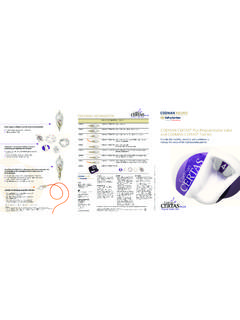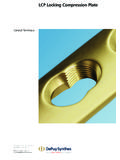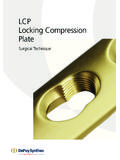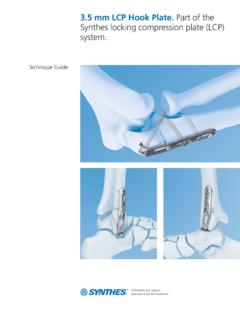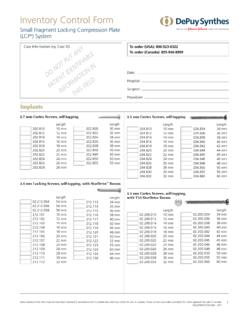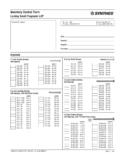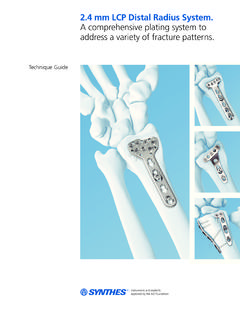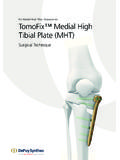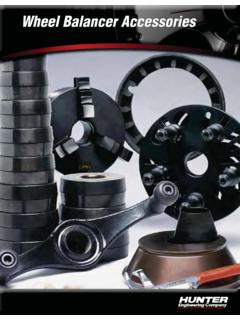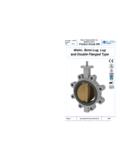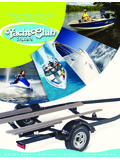Transcription of INTUITION INSTRUMENTS SURGICAL TECHNIQUE
1 INTUITION INSTRUMENTS SURGICAL TECHNIQUEI ntroductionThis SURGICAL TECHNIQUE provides guidelines for the implantation of the ATTUNE Knee System Family of Knee Implants with the INTUITION Instrumentation. ATTUNE Knee System Implants are available in four configurations: Posterior Stabilized Fixed Bearing (PS FB), Posterior Stabilized Rotating Platform (PS RP), Cruciate Retaining Fixed Bearing (CR FB) and Cruciate Retaining Rotating Platform (CR RP) The Cruciate Retaining (CR) configurations can also be used for Cruciate Sacrificing (CS) Knee System SURGICAL TECHNIQUE DePuy Synthes Companies 1 ContentsKey SURGICAL Steps Summary 2 Incision and Exposure 4 Pinning 5 Pinning TECHNIQUE 6 Distal Femoral Resection 7 Distal Femoral Resection - Instrument Assembly 8 Distal Femoral Resection 10 Tibial Alignment and Resection - Instrument Assembly 14 Tibial Alignment and Resection 15 Extension Gap Assessment and Balancing 20 Femoral Rotation 22 Measured Femoral Sizing and Rotation 23 Balanced Femoral Sizing and Rotation 29 Femoral Preparation 37 Posterior Condyle Preparation 42 Femoral Resection - PS Femoral Notch Cuts 44 Trial Reduction 46 Soft Tissue Considerations for Cruciate Retaining Application 48 Trial Components 49 Tibial Preparation 53 Patella Resection and Preparation Instrument Assembly 55 Patella Resection 57 Patella Preparation 59 Lug Hole Preparation 62 Tibial Base
2 Implantation 63 Femoral Component Implantation 65 Tibial Insert Implantation 68 Final Patella Preparation 70 Patella Component Implantation 71 Closure 72 Appendix 1: Optional Patella Drilling TECHNIQUE 73 Appendix 2: Optional Minimally Invasive Instrument TECHNIQUE 74 Appendix 3: Optional Lamina Spreader TECHNIQUE 78 Flexion/Extension Gap Chart 81 Tibial Component Sizing Chart 82 Compatibility Data 83 Symbols on SURGICAL INSTRUMENTS 842 DePuy Synthes Companies ATTUNE Knee System SURGICAL TechniqueKey SURGICAL Steps SummaryPatella Resection andFinal Patella PreparationFemoral Alignment and Distal Resection Incision and ExposureBalanced Femoral Sizing and Rotation Measured Femoral Sizing and Rotation Femoral Preparation Femoral Lug Hole Preparation ATTUNE Knee System SURGICAL TECHNIQUE DePuy Synthes Companies 3 Tibial Alignment and Proximal Resection Extension Gap Assessment and Balancing Final Component Implantation Trial Reduction Tibial PreparationNote: All resections are done using a mm Saw Blade to maximize accuracy through the Slotted Cutting Guides.
3 4 DePuy Synthes Companies ATTUNE Knee System SURGICAL TechniqueIncision and ExposureThe INTUITION INSTRUMENTS are designed for both standard open and minimally invasive approaches to the knee. Incision and exposure should be performed using the surgeon s preferred any hypertrophic synovium and a portion of the infrapatellar fat pad to allow access to the medial, lateral, and intercondylar spaces. Before proceeding, consider removing prominent osteophytes, particularly medial and lateral osteophytes, as they can affect soft tissue balancing. Accurate patella alignment is important for proper placement and tracking. It is recommended not to drill the patella lug holes prior to the trialing step so that correct rotation and position of the patella trial may be assessed. Many of the INSTRUMENTS on the following pages are made of polymer materials. As with any composite or polymer-based instrument, it is important to allow adequate drying time after Knee System SURGICAL TECHNIQUE DePuy Synthes Companies 5 PinningThe ATTUNE Knee System has mm diameter pins to increase the stability and functionality of the INSTRUMENTS .
4 The INTUITION INSTRUMENTS are designed to be used with the Single-Use Pin Pack (2544-00-111) that contains Universal Pins and Threaded Headed Pins. Threaded Non-Headed Pins are also shown below. Universal Pin The Universal Pin can be drilled in or hammered in, and drilled out or pulled out using the Pin DriverThe Threaded Non-Headed Pin is also available and is designed to be inserted and removed with a Power Headed Pin Threaded Non-Headed Pin The Threaded Headed Pin is designed to be inserted and removed with a Power Drill. These pins are best used to secure blocks against a flat surface such as cut bone. Pin JackSteinmann Pins are compatible with all pin holes throughout the INTUITION is recommended to use Threaded Headed Pins through the divergent holes in the A/P Chamfer Block to provide sufficient stability against the distal femoral DePuy Synthes Companies ATTUNE Knee System SURGICAL TechniquePinning TechniqueIncorrect Pinning Correct Pinning Do not overtighten.
5 Overtightening may change the angle or cause the pin to Pins are best used to secure blocks against a flat surface such as cut bone. Non-Headed Pins are recommended for use with cutting blocks against a curved surface such as with the Distal Cut Knee System SURGICAL TECHNIQUE DePuy Synthes Companies 7 Distal Femoral ResectionIf the Balanced Sizer is intended to be used, then the position of the IM hole is important as it determines the pivot point for femoral rotation. It should be selected to be 3 - 5 mm medial to the apex of the intercondylar notch and 7 - 10 mm anterior to the origin of the Posterior Cruciate Ligament (PCL).Drawing a centering mark or Whiteside s Line and the pre-operative X-ray may be useful to assist precise location of the IM the proper position, the Step Drill should pass easily into the femoral the step feature of the Step Drill to increase the diameter of the hole. This will allow depressurization of the canal when the IM Rod is DePuy Synthes Companies ATTUNE Knee System SURGICAL TechniqueOutrigger SlideResection KnobOutrigger Cutting Block ClipPull BackDistal Femoral Cutting BlockDistal Femoral Resection Instrument AssemblyOrder of Assembly:1.
6 Rotate the Resection Knob of the Outrigger counterclockwise until the padlock symbol is aligned with the arrow. 2. Insert the Outrigger Slide into the Outrigger. 3. Rotate the Resection Knob clockwise to set the desired resection Engage the Distal Femoral Cutting Block with the Outrigger Slide and the Cutting Block Clip. Distal Femoral Jig AssemblyATTUNE Knee System SURGICAL TECHNIQUE DePuy Synthes Companies 9 Distal Resection Depth4 mm difference between a Slotted and Non-Slotted resectionResection Knob adjusts distal resection depthDistal Femoral Resection Instrument AssemblyA 9 mm resection will match the thickness of the implant. The arrow on the Outrigger, near the Resection Knob, indicates the resection level when using the Cutting Slot. Each click moves the Distal Femoral Cutting Block 1 mm proximal or distal. 10 DePuy Synthes Companies ATTUNE Knee System SURGICAL TechniqueDistal PlateFixation Pin HolesV/V DialV/V Indicator CapDistal Femoral ResectionSet the desired Valgus angle (left or right - 0 degrees to 9 degrees) on the Distal Femoral Jig by pulling the Varus/Valgus (V/V) Dial toward the Femoral Handle, rotating it clockwise or counterclockwise to the appropriate sure that the Varus/Valgus Dial is FULLY disengaged by sliding it back from the Distal Plate before rotating it.
7 INFORMATIONiATTUNE Knee System SURGICAL TECHNIQUE DePuy Synthes Companies 11 Distal Femoral Resection Insert the IM Rod into the femoral canal to the level of the isthmus. Disengage the Distal Femoral Jig from the Handle by pushing on the V/V Indicator Cap and slide the Jig toward the femur until the distal plate contacts the distal femur. The Jig may be pinned temporarily using pin holes in the distal resection the Distal Femoral Cutting Block on the anterior femur by rotating it until it is seated on the anterior DePuy Synthes Companies ATTUNE Knee System SURGICAL TechniqueDistal Femoral ResectionDivergent Pin HoleDisengage the Distal Femoral Cutting Block from the Outrigger Slide by pressing the Red Cutting Block Clip. Pull the entire instrument distally. To further adjust the distal resection depth once the Distal Femoral Jig is removed, use the distal or proximal pin holes, that move the block 2 mm in either of the Distal Femoral Jig Pull DistallyCutting Block ClipSecure the Cutting Block to the femur with two Universal or Non-Headed Pins through the holes marked with a center line.
8 If necessary for additional stability, insert a Universal or Non-Headed Pin through one of the divergent pin holes on the Cutting Knee System SURGICAL TECHNIQUE DePuy Synthes Companies 13 Distal Femoral Resection Resect the distal the Distal Femoral Cutting Block. Depending on surgeon preference, the Pins may be removed or left in place to allow for a recut if DePuy Synthes Companies ATTUNE Knee System SURGICAL TechniqueTibial Alignment and Resection Instrument AssemblyHeight Adjustment KnobExtramedullary Tibial Proximal Uprod Right Tibial Cutting BlockProximal Central MarkingA/P Adjustment MechanismV/V Adjustment MechanismA/P RatchetExtramedullary Tibial Distal UprodExtramedullary Tibial Ankle ClampIndicator LineTibial Jig AssemblyPosterior Slope AdjustmentComplete AssemblyWith the Height Adjustment Knob fully unscrewed on the Tibial Proximal Uprod, attach the Tibial Distal Uprod to the Proximal Uprod. Then attach the Tibial Ankle Clamp to the Distal Uprod.
9 Assemble the appropriate Cutting Block to the Tibial Proximal Uprod. Left Tibial Cutting BlockCutting Block OptionsRight Tibial Cutting BlockSymmetrical Cutting BlockATTUNE Knee System SURGICAL TECHNIQUE DePuy Synthes Companies 15 Tibial Alignment and ResectionTibia Slope Recommendations: For a Posterior Stabilized (PS) configuration it is recommended to set the tibial posterior slope at 3 degrees. For a Cruciate Retaining or Cruciate Sacrificing (CR/CS) configuration, a range of 5 - 7 degrees of tibial posterior slope is recommended, attempting to match the patient s slope. In PCL-retaining TKA not adding adequate slope may limit the post-operative flexion. INFORMATIONiSet the tibial posterior slope as depicted on the Proximal Uprod of the Tibial Jig, according to the recommendations depending on the appropriate implant configuration. Place the knee in 90 degrees of flexion. Place the Ankle Clamp around the malleoli. Set Varus/Valgus rotation by aligning the proximal central marking on the Tibial Cutting Block with the medial one third of the tibial tubercle.
10 The axis of the Proximal Uprod should be positioned with reference to the tibial axis. Note that the figures on the Jig will only deliver that angle if the rest of the Jig is set up correctly as pictured here. If the slope adjustment is changed after the Cutting Block is resting against bone, the surgeon should re-align the Uprod to be parallel to the tibial axis by moving the A/P adjustment Lever16 DePuy Synthes Companies ATTUNE Knee System SURGICAL TechniqueTibial Alignment and ResectionIn ankles with a large soft tissue envelope in which the soft tissue prevents achieving 0 degrees of alignment at the neutral position, the Distal Uprod can be moved posterior to reveal the Through-Slot to achieve a 0 degree RatchetA/P BossSide SlotWhen checking and setting the sagittal alignment, be careful to prevent anterior slope. This could happen if the A/P Boss on the Distal Uprod is translated too far towards the ankle, exposing the Through-Slot.
